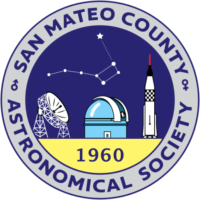=============================
Monday, 01/29/24
03:30 PM – 04:30 PM
In-person and Livestream
Stanford Linear Accelerator (SLAC) Colloquium Series
2575 Sand Hill Rd, Building 51
Kavli Auditorium
Menlo Park, CA 94025
Zoom: https://stanford.zoom.us/j/95593091552?pwd=QlZuTGU0YnU4dG5Kb2d1VVBueVhVUT09#success
The Path to an Energy Frontier Muon Collider
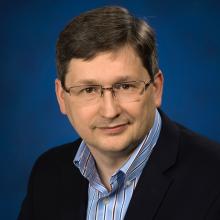
Muon colliders offer a unique path to multi-TeV, high-luminosity lepton collisions. Muon collisions with a center-of-mass energy of 10 TeV or above would offer significant discovery potential where the constituent collision energies exceed those of the LHC program by an order of magnitude. Significant progress on the fundamental R&D and design concepts for such a machine has led to a new international effort to assemble a conceptual design within the next few years. This effort will assess the viability of such a machine as a successor to the LHC program. The remaining challenges and the R&D required to deliver a complete machine description will be described.
Speaker: Mark Palmer, Brookhaven National Laboratory
Website: https://colloquium.slac.stanford.edu/events/2024-01-24-path-energy-frontier-muon-collider
Cost: Free
=============================
Wednesday, 01/31/24
07:30 PM – 08:30 PM
In-person
Marin Science Seminar
320 Nova Albion Way
Terra Linda High School Innovation Hub 1st Floor
San Rafael, CA 94903
Wonderfest: The Most Famous Equation
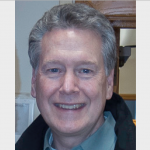
Around the world, people recognize that E=mc^2 oozes cosmic insight. But what does this “most famous equation” really say? What are energy and mass? And what makes the speed of light, c, so important? [Hint: mass, moving at speed c, doesn’t turn into energy!] Using little more than common experience and middle-school math, Einstein’s “special relativity” gem can come to life – with surprising insights into the nature of reality.
This event is co-produced by Wonderfest and Marin Science Seminar. Our speaker is long-time physics teacher Tucker Hiatt, founding director of Wonderfest. Tucker has been a Visiting Scholar in the Stanford Chemistry Department and is a recipient of the Amgen Award for Science Teaching Excellence.
Website: https://wonderfest.org/most-famous-equation-4/
Cost: Free
=============================
Thursday, 02/01/24 6:30 PM
In-person
Ocean View Brew Works
627 San Pablo Ave.
Albany, CA 94706

Is Anybody Out There? Innovative Approaches in the Search for Extraterrestrial Civilizations
Speaker: Dan Werthimer, Berkeley SETI Research Center
Website: https://clear-project.org/pubscience/
Cost: Free
=============================
Friday, 02/02/24
12:00 PM – 01:00 PM
In-person
Earth and Marine Sciences Building
UC Santa Cruz
Room A340
Santa Cruz, CA 95064
Isotopes in planets: From the earliest planetesimals to the Moon-forming giant impact

Speaker: Thomas Kruijer
Website: https://eps.ucsc.edu/news-events/igpp-seminar/winter-2024.html
Cost: Free
=============================
Friday, 02/02/24
06:00 PM – 10:00 PM
In-person
Chabot Space and Science Center
10000 Skyline Blvd
Oakland, CA 94619

First Friday: Celestial Cinema
Join Chabot in a galaxy far, far away to get a behind-the-scenes look at how space films are made and put science in science fiction with experts in the field of filmmaking. Create your own flipbook sci-fi adventure, attend hands-on workshops and guest lectures, and take a trip to a distant galaxy in our Planetarium. First Friday: Celestial Cinema is a sci-fi fantasy adventure the whole family can enjoy!
Website: https://chabotspace.org/calendar/first-friday-celestial-cinema/
Cost: $15 General, $10 Kids/Seniors, $5 Members
=============================
Friday, 02/02/24 8:00 PM
In-person
San Mateo Co. Astronomical Society
College of San Mateo Bldg 36
1700 W Hillsdale Rd
San Mateo, CA 94402

N = 1: Alone in the Milky Way
Speaker: Dr. Pascal Lee
Planetary scientist Dr. Pascal Lee will review our present knowledge about each term of the Drake Equation used to estimate the number (N) of advanced civilizations present in our Milky Way galaxy, which is at the heart of the Search for Extraterrestrial Intelligence (SETI). He will examine star and planet formation, geological and biological evolution, the emergence of intelligence and technology, and possible fates of advanced civilizations. Even though planets are plentiful in the Milky Way and life as a natural product of chemical and biological evolution is likely common, he reaches the surprising conclusion that the number of advanced civilizations in our Galaxy is likely a small number, most likely N~1. Says Dr. Lee: “We might be it in the vastness of our galaxy, or there might be just one other…”. Implications of N~1 are profound and will be discussed.
Website: http://www.smcasastro.com/meetings.html
Cost: Free
============================
Friday, 2/02/24 7PM
In-person
Telescope Makers Workshop
Chabot Space and Science Center
10000 Skyline Boulevard
Oakland, CA 94619-245
The Chabot Telescope Maker’s workshop reopens! Chabot’s TMW is one of only a handful of regularly scheduled telescope-making workshops in the U.S., and probably the world; it meets every Friday evening throughout the year, except Memorial Day weekend. It has been in operation since December of 1930, founded by Franklin B. Wright, and is currently run by Eastbay Astronomical Society member Rich Ozer, with help from other EAS members, Dave Barosso, Barry Leska, and others. The price of admission is FREE. All you have to do is show
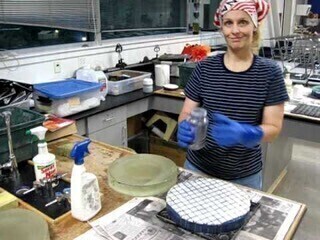
up, buy a mirror blank and a “tool” (typically around $100 – $200 depending on the size of the mirror), and start “pushin’ glass!” We supply you with instructions, the various grits you’ll need to first grind, and then polish and figure your mirror, and all the testing equipment needed. With a small bit of luck, you could wind up with a telescope that costs 1/3 or 1/4 the cost of a store-bought telescope, that is yet optically superior! It does take time – depending on how much time you put in on it, and other factors, it could take a few months.. But, it’s a fun project, great for kids, and at the end, you get a great telescope!
Enter from the main loading dock behind the main building.
Please be prepared with proof of vaccination and a mask. These are
Chabot Rules, which we always must adhere to.
If you have a project, bring it with you so we can assess the next steps.
You can also bring any other equipment or literature you may have
questions about.
For more information call or email Richard Ozer at richozer1@… or phone (510) 406-1914.
=============================
Friday, 02/02/2024 9 PM-11 PM for night observing, and Saturday 02/03/2024
10 AM-12 Noon for solar observing
In-person
Foothill Observatory is open again!
12345 El Monte Road
Los Altos Hills, CA 94022
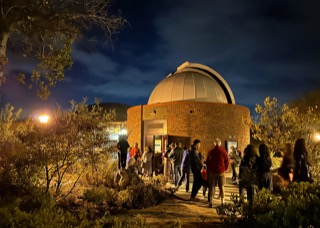
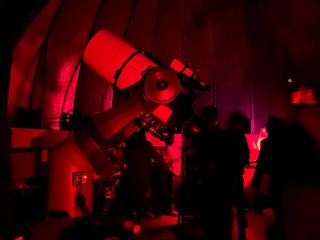
Foothill Observatory is now Open EVERY clear Friday night and Saturday morning
The Foothill College Astronomy Department and Peninsula Astronomical Society (PAS) have reopened public viewing programs at Foothill College Observatory on:
· Every clear Friday night from 9 p.m. to 11 p.m. for star gazing
· Every clear Saturday morning from 10 a.m. to noon for solar viewing
Since we are still dealing with COVID-19, we are adopting the following guidelines to enable the safe operation of the Observatory for both our public visitors and our PAS operators. We ask that visitors please agree to comply with these guidelines before visiting the Observatory and to direct any questions to info@…
ATTENDANCE GUIDELINES
1. Full vaccination against COVID-19 is required to visit the Foothill College campus — This is a College requirement detailed on the Foothill College COVID-19 Behavioral Expectations page. So bring your vaccination certificate if possible.
2. Mask usage is required anytime visiting the Foothill College campus — This includes the Observatory, per the same college policy linked above in item 1.
3. The number of visitors allowed inside the Observatory is reduced — To avoid overcrowding within the limited space, please wait outside the observatory until a PAS telescope operator lets you and your group inside. Once your group is done viewing through the telescope, you will exit the Observatory so that a new group may enter.
Websites: https://foothill.edu/astronomy/observatory.html
=============================
Friday, 02/02/2024 and Saturday 2/03/2024
07:30 PM – 10:00 PM–Free telescope viewings are back!
In-person
Chabot Space and Science Center
10000 Skyline Blvd
Oakland, CA 94619


Free Telescope Viewings
Join Chabot astronomers on the Observatory Deck for a free telescope viewing! Weather permitting, this is a chance to explore stars, planets, and more through Chabot’s historic telescopes. Chabot’s three large historic telescopes offer a unique way to experience the awe and wonder of the Universe. Our observatory deck offers breathtaking views 1,500 feet above the Bay. Three observatory domes house the Center’s 8-inch (Leah, 1883) and 20-inch (Rachel, 1916) refracting telescopes, along with a 36-inch reflecting telescope (Nellie, 2003).
Are the skies clear for viewing tonight? Viewing can be impacted by rain, clouds, humidity, and other weather conditions. Conditions can be unique to Chabot because of its unique location in Joaquin Miller Park. Before your visit, check out the Weather Station to see the current conditions at Chabot.
https://chabotspace.org/weather-station
Website: https://chabotspace.org/events/events-listing/
=============================
Saturday, 02/03/24
12:00 PM – 03:00 PM
In-person
Nike Missle Site
Field Rd
Mill Valley, CA 94941

Nike Missile Site Veteran Open House
Veterans of the Nike program come to the site to share their stories with visitors and give guided tours of SF88 between the hours of 12 pm – 3 pm
The SF-88 Nike Missile Site is the most fully restored Nike missile site in the country. During the tense years of the Cold War, from 1953 to 1979, the United States Army built and operated close to 300 Nike missile sites in the United States. These sites were designed to be the last line of defense against H-Bomb carrying Soviet bombers that had eluded the Air Force’s interceptor jet aircraft. SF-88 in the Marin Headlands was one such site. Today, Golden Gate National Recreation Area works together with a dedicated group of volunteers to preserve the site as it was during operations to remind visitors of the physical and psychological effects of the Cold War on the American landscape.
=============================
Saturday, February 03, 2024
Sunset: 5:35 PM
In-person
San Mateo Co. Astronomical Society
Crestview Park
1000 Crestview Drive
San Carlos, CA
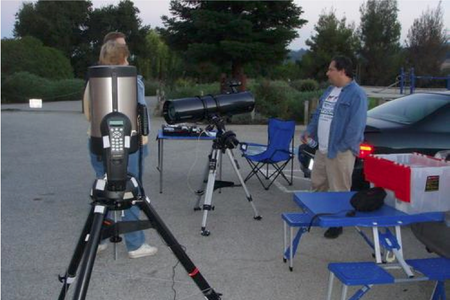
Public Star Parties at Crestview Park in San Carlos
SMCAS and the City of San Carlos Parks Department host a public star party at Crestview Park in San Carlos twice a month when there is a new moon. Members set up telescopes and let the public view and share their knowledge of the night sky all for Free. All ages are welcome. If you have kids interested in space or science, bring them here for a real-time view of planets, nebula, star clusters, and galaxies.
If you are a Non-member and own a telescope, bring it to share! Experts are available if you need assistance or have questions about buying a telescope.
Telescope setup begins at sunset and observing starts one hour after sunset. In the event of inclement weather (rain, clouds, fog, or high winds) the star party will be canceled. Because each astronomer makes his or her own decision about bringing their telescope, there is no official cancellation notice.
Crestview Park is located at 1000 Crestview Drive in San Carlos
=============================
Saturday, 02/03/24
06:30 PM – 08:30 PM
In-person
Rancho Cañada Del Oro Open Space Preserve
4289 Casa Loma Rd
Morgan Hill, CA 95037
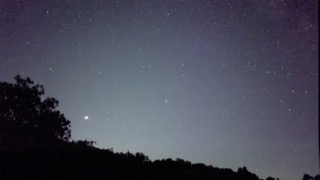
Starry Nights Star Party
The San Jose Astronomical Association (SJAA), working with the Santa Clara County Open Space Authority (OSA), is glad to co-host a public star party at Rancho Canada del Oro (RCDO) Open Space Preserve. This site, just 30 minutes south of downtown San Jose, features dark skies. It’s dark enough to see the band of our Milky Way galaxy in the summer.
Do not bring your own telescope (binoculars are welcome, but please no tripods). SJAA club members will set up their telescopes to help star party guests get the most knowledge and enjoyment out of the dark night sky.
In addition to traditional telescopes, the SJAA has incorporated Electronically Assisted Astronomy (EAA) into the Starry Nights Program. We will be using an automated telescope with a camera-like sensor to show live images on an iPad.
· This is a family-friendly event, and although younger children are welcome, this activity is best suited for children aged 5 years and older.
· No touching the telescopes or eyepieces. (Maybe a focus knob, if instructed by the astronomer. It’s OK to ask).
· Dress in warm layers (it gets cold at night).
· Flashlights: To help preserve everyone’s night vision, if you bring a dim white flashlight, be sure to have it wrapped in red plastic, or get it wrapped at the sign-in desk.
· Registration for this event has a limit of approximately 85 people due to available parking space at the observing site.
Registration is required at Weblink
Website: https://www.meetup.com/sj-astronomy/events/297873723/
Cost: Free
=============================
Sunday, 02/04/24
01:30 PM – 03:30 PM
In-person
San Jose Astronomical Association
Houge Park
3972 Twilight Drive
San Jose, CA 95124
Solar Observing

It’s there for us year-round, lighting our days and providing energy for our lives, so maybe it’s time to give it a closer look. Join SJAA for amazing and detailed views of the Sun, and be assured that we’ll be using special telescopes that will keep your eyeballs perfectly safe.
We’ll have white-light telescopes with dense solar filters that reveal sunspots. Further, we’ll show you hydrogen-alpha telescopes that isolate a very specific color of red that reveals prominences (often thought of as solar flares) and intricate texture within the Sun’s chromosphere (its atmosphere).
We can also share with you a little about how the Sun works and how complex magnetic fields drive the number of sunspots and prominences that we’ll see on a given day.
Around 1:45, we’ll have a short, informal introductory talk, and at other times, you can enjoy the views and ask questions about the Sun, telescopes, or astronomy in general.
We’re also planning a station for you to get a better feel for the huge scale of our solar system! And you’ll get a solar system you can fold up and carry in your pocket.
You may bring your own telescope. If you have a properly filtered white light or H-alpha telescope and want to share views with others, please arrive at 1:30 or earlier, so you have time to set up before the event officially starts.
Weather dependent. Sign up at weblink
Website: https://www.meetup.com/sj-astronomy/events/298550024
Cost: Free
=============================
Monday, 02/05/24
04:15 PM – 05:15 PM
In-person
Physics North
UC Berkeley
Room 1
Berkeley, CA 94720
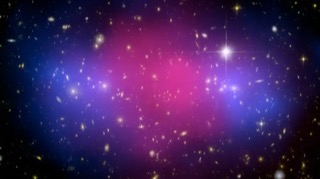
The Search for Wavy Dark Matter: Axions ABRACADABRA to DMRadio
The particle nature of dark matter remains one of the great open questions in physics. There is a broad category of candidates whose mass is so light that they behave more as waves than as particles. The most well-known is the axion, which has had a renaissance as a dark matter candidate as theoretical studies have improved our understanding of axion cosmology and advances in quantum sensing and cryogenics have opened new opportunities for detection. In this talk, I will present an overview of the field of wavy dark matter and with a focus on my work to realize a definitive search for GUT-scale axions with the DMRadio program and the ABRACADABRA demonstrator.
Speaker: Lindley Winslow, Massachusetts Institute of Technology
Website: https://events.berkeley.edu/physics/event/229834-physics-colloquium-with-professor-lindley-winslow
Cost: Free
=============================
Monday, 02/05/24
07:30 PM – 09:00 PM
In-person
Benjamin Dean Astronomy Lecture
California Academy of Sciences
55 Music Concourse Dr.
San Francisco, CA 94118
The Hunt for the First Galaxies

Seeking the first galaxies to form after the Big Bang is the primary rationale for building the James Webb Space Telescope (JWST). These first galaxies have eluded the Hubble Space Telescope (HST) because the expansion of the Universe has stretched their light to wavelengths undetectable by HST. With its increased sensitivity in infrared light, JWST has discovered hundreds of galaxies more distant than HST could possibly detect, and the first galaxies are forming stars earlier and more rapidly than expected.
Speaker: Dr. Marcia Rieke, University of Arizona
Website: https://www.calacademy.org/events/benjamin-dean-astronomy-lectures/the-hunt-for-the-first-galaxies
Cost: $15 General, $12 Members & Seniors
=============================
Tuesday, 02/06/24 3:30 PM-rescheduled from 01/30/2024
In-person
Hewlett Teaching Center
370 Jane Stanford Way, Room 201
Stanford University
Stanford, CA 94305
Extreme Electrodynamics of Neutron Stars and Black Holes

The development of classical electromagnetism and quantum electrodynamics are high points of nineteenth and twentieth-century physics, respectively. Recent, remarkable discoveries, involving neutron stars and black holes, are taking electrodynamics into unfamiliar and “extreme” territory, requiring new theoretical approaches. Examples include 100 GT (10^15 Gauss) magnetic fields surrounding neutron stars (and possibly a hundred times greater within neutron stars), the production of radio waves with effective temperatures of 10^40 K, gravitational wave sources with powers as high as 10^49 W, the emission of neutrinos and gamma rays with energies in the PeV range and the acceleration of cosmic rays with energies up to million times greater than this, perhaps involving EMFs as large as 10^23 V, generated by spinning black holes. The rapidly developing observational situation will be summarized, along with some of the competing ideas and approaches under active investigation.
Speaker: Roger Blandford, Stanford University
Cost: Free
=============================
Tuesday, 02/06/24
04:00 PM – 05:00 PM
Register to attend in person or online.
Sutardja Dai Hall
UC Berkeley
Banatao Auditorium
Berkeley, CA 94720
YouTube: https://www.youtube.com/watch?v=S4o0qRqvfKU
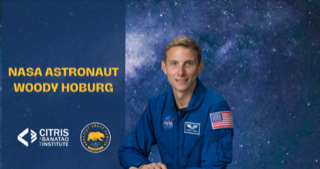
From UC Berkeley to NASA: My Path to Astronaut
Warren “Woody” Hoburg was selected by NASA to join the 2017 Astronaut Candidate Class. He reported for duty in August 2017 and having completed the initial astronaut candidate training became eligible for a mission assignment. The Pennsylvania native earned a bachelor’s degree in aeronautics and astronautics from the Massachusetts Institute of Technology (MIT) and a doctorate in electrical engineering and computer science from the University of California, Berkeley. He was leading a research group at MIT at the time of his selection. He is an instrument-rated commercial pilot in single-engine and multi-engine airplanes.
Hoburg launched to the International Space Station as pilot of NASA’s SpaceX Crew-6 mission aboard a SpaceX Crew Dragon spacecraft on March 2, 2023. After splashing down safely in a SpaceX Dragon spacecraft off the coast of Jacksonville, Florida on Sept. 4, 2023, NASA’s SpaceX Crew-6 completed the agency’s sixth commercial crew rotation mission to the International Space Station. Woody Hoburg has logged 186 days in space over his increment (Expedition 69) for a total of 186 days in space on his first flight. Hoburg conducted two EVAs totaling 11 hours, and 38 minutes.
Cost: Free
=============================
Wednesday, 02/07/24
07:00 PM – 08:30 PM
In-person and Livestream
Silicon Valley Astronomy Lecture Series
Foothill College
Smithwick Theater
Los Altos Hills, CA 94022
YouTube: https://www.youtube.com/@SVAstronomyLectures
Exploring the Gravitational Wave Universe: New Discoveries and Plans
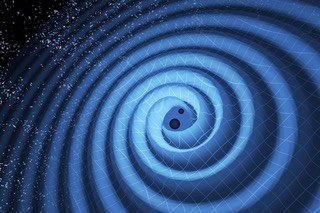
Measuring gravitational waves is a revolutionary new way to do astronomy. They were predicted by Einstein but we did not have the technology to find them in his lifetime. In 2015, LIGO (the Laser Interferometer Gravitational-wave Observatory) first detected one of these waves – a tiny ripple in space itself, generated by the collision of two black holes. Since then, LIGO and its international partners have measured nearly 100 signals. What can we learn from these bursts of energy from the mergers of black holes or the collision of two neutron stars? How is it possible to measure a wave that stretches our detector 1000 times less than the diameter of a proton? And what’s coming next in our search for these tell-tale ripples in space?
Speaker: Dr. Brian Lantz is a Senior Research Scientist at Stanford University. He started working on LIGO in 1991 as an undergraduate in Nobel Laureate Rai Weiss’s lab at MIT and continued there for his PhD, building high-power interferometers that were prototypes for LIGO. Dr. Lantz is the scientific leader for the Advanced LIGO seismic isolation system, and he is designing new mirror suspensions to upgrade Advanced LIGO. He loves to work on these amazing machines.
Website: https://foothill.edu/astronomy/
Cost: Free
=============================
Friday, 02/09/24
07:15 PM – 09:15 PM
In-person
San Jose Astronomical Association
Houge Park
3972 Twilight Drive
San Jose, CA 95124
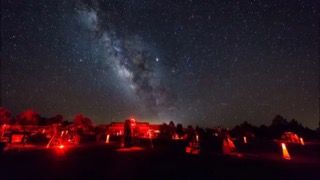
In Town Star Party
Come join the San Jose Astronomical Association (SJAA) for an evening of stargazing.
• Events are held at the parking lot of our headquarters, Houge Park San Jose. The event duration is 2 hours. SJAA volunteers will share night sky views from their telescopes.
• Please refrain from bringing your own telescopes (Binoculars are welcome). If you like to be a volunteer with or without a telescope please email at “[email protected]“.
Register at weblink
Website: https://www.meetup.com/sj-astronomy/events/298247781/
Cost: Free
=============================
Friday, 2/09/24 7PM
In-person
Telescope Makers Workshop
Chabot Space and Science Center
10000 Skyline Boulevard
Oakland, CA 94619-245
The Chabot Telescope Maker’s workshop reopens! Chabot’s TMW is one of only a handful of regularly scheduled telescope-making workshops in the U.S., and probably the world; it meets every Friday evening throughout the year, except Memorial Day weekend. It has been in operation since December of 1930, founded by Franklin B. Wright, and is currently run by Eastbay Astronomical Society member Rich Ozer, with help from other EAS members, Dave Barosso, Barry Leska, and others. The price of admission is FREE. All you have to do is show

up, buy a mirror blank and a “tool” (typically around $100 – $200 depending on the size of the mirror), and start “pushin’ glass!” We supply you with instructions, the various grits you’ll need to first grind, and then polish and figure your mirror, and all the testing equipment needed. With a small bit of luck, you could wind up with a telescope that costs 1/3 or 1/4 the cost of a store-bought telescope, that is yet optically superior! It does take time – depending on how much time you put in on it, and other factors, it could take a few months.. But, it’s a fun project, great for kids, and at the end, you get a great telescope!
Enter from the main loading dock behind the main building.
Please be prepared with proof of vaccination and a mask. These are
Chabot Rules, which we always must adhere to.
If you have a project, bring it with you so we can assess the next steps.
You can also bring any other equipment or literature you may have
questions about.
For more information call or email Richard Ozer at richozer1@… or phone (510) 406-1914.
=============================
Friday, 02/09/2024 9 PM-11 PM for night observing, and Saturday 02/10/2024
10 AM-12 Noon for solar observing
In-person
Foothill Observatory is open again!
12345 El Monte Road
Los Altos Hills, CA 94022


Foothill Observatory is now Open EVERY clear Friday night and Saturday morning
The Foothill College Astronomy Department and Peninsula Astronomical Society (PAS) have reopened public viewing programs at Foothill College Observatory on:
· Every clear Friday night from 9 p.m. to 11 p.m. for star gazing
· Every clear Saturday morning from 10 a.m. to noon for solar viewing
Since we are still dealing with COVID-19, we are adopting the following guidelines to enable the safe operation of the Observatory for both our public visitors and our PAS operators. We ask that visitors please agree to comply with these guidelines before visiting the Observatory and to direct any questions to info@…
ATTENDANCE GUIDELINES
1. Full vaccination against COVID-19 is required to visit the Foothill College campus — This is a College requirement detailed on the Foothill College COVID-19 Behavioral Expectations page. So bring your vaccination certificate if possible.
2. Mask usage is required anytime visiting the Foothill College campus — This includes the Observatory, per the same college policy linked above in item 1.
3. The number of visitors allowed inside the Observatory is reduced — To avoid overcrowding within the limited space, please wait outside the observatory until a PAS telescope operator lets you and your group inside. Once your group is done viewing through the telescope, you will exit the Observatory so that a new group may enter.
Websites: https://foothill.edu/astronomy/observatory.html
=============================
Friday, 02/09/2024 and Saturday 2/10/2024
07:30 PM – 10:00 PM–Free telescope viewings are back!
In-person
Chabot Space and Science Center
10000 Skyline Blvd
Oakland, CA 94619


Free Telescope Viewings
Join Chabot astronomers on the Observatory Deck for a free telescope viewing! Weather permitting, this is a chance to explore stars, planets, and more through Chabot’s historic telescopes. Chabot’s three large historic telescopes offer a unique way to experience the awe and wonder of the Universe. Our observatory deck offers breathtaking views 1,500 feet above the Bay. Three observatory domes house the Center’s 8-inch (Leah, 1883) and 20-inch (Rachel, 1916) refracting telescopes, along with a 36-inch reflecting telescope (Nellie, 2003).
Are the skies clear for viewing tonight? Viewing can be impacted by rain, clouds, humidity, and other weather conditions. Conditions can be unique to Chabot because of its unique location in Joaquin Miller Park. Before your visit, check out the Weather Station to see the current conditions at Chabot.
https://chabotspace.org/weather-station
Website: https://chabotspace.org/events/events-listing/
=============================
Saturday, February 10, 2024
Sunset: 5:42 PM
In-person
San Mateo Co. Astronomical Society
Crestview Park
1000 Crestview Drive
San Carlos, CA

Public Star Parties at Crestview Park in San Carlos
SMCAS and the City of San Carlos Parks Department host a public star party at Crestview Park in San Carlos twice a month when there is a new moon. Members set up telescopes and let the public view and share their knowledge of the night sky all for Free. All ages are welcome. If you have kids interested in space or science, bring them here for a real-time view of planets, nebula, star clusters, and galaxies.
If you are a Non-member and own a telescope, bring it to share! Experts are available if you need assistance or have questions about buying a telescope.
Telescope setup begins at sunset and observing starts one hour after sunset. In the event of inclement weather (rain, clouds, fog, or high winds) the star party will be canceled. Because each astronomer makes his or her own decision about bringing their telescope, there is no official cancellation notice.
Crestview Park is located at 1000 Crestview Drive in San Carlos
=============================
Monday, 02/12/24 7:00 PM
In-person
Hewlett Teaching Center
370 Jane Stanford Way, Room 201
Stanford University
Stanford, CA 94305
The Fast Radio Sky
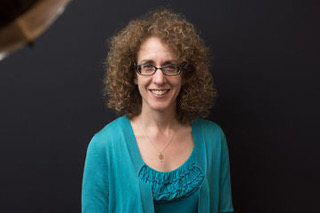
In 2007, astronomers discovered a new mysterious cosmic phenomenon: Fast Radio Bursts. These events consist of short, intense blasts of radio waves arriving from far outside our Milky Way galaxy. Their origin is unknown, however, Fast Radio Bursts appear ubiquitous in our Universe, with roughly 1000 arriving every day over the full sky. I will describe the Fast Radio Burst mystery and what is presently known about it, and present a revolutionary new radio telescope recently built in Canada that is enabling astronomers to make major progress in our understanding of the FRB puzzle.
Speaker: Victoria Kaspi, McGill University
Website: https://events.stanford.edu/event/victoria_kaspi_-_the_fast_radio_sky_the_38th_annual_bunyan_lecture
Cost: Free
=============================
Tuesday, 02/13/24
09:00 AM – 10:00 AM
Livestream
SETI Institute
The Search for Life Beyond Earth: How it’s Done, Where it Stands and Why it Matters – Livestream
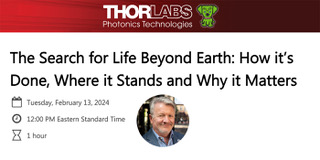
Humans have pondered the question of our place in the cosmos and whether we are alone in the Universe since our ancestors first gazed upon the stars with wonder and curiosity. For most of human history, the question of life beyond Earth has been relegated to the religious and philosophical. But with the invention of the radio and humanity’s transition to a technological species, one of our most profound questions has migrated from the domain of intellectual speculation to the domain of scientific pursuit. Technological activities such as radio transmissions can travel at lightspeed across interstellar and even intergalactic space and are readily differentiated from natural phenomena. Initially suggested by astronomers in 1959, the first experiments to search for such transmissions were conducted just one year later by Frank Drake at the National Radio Astronomy Observatory in Green Bank W. Virginia. Frank and his colleagues believed that evidence of technology outside our solar system would serve as a definitive proxy for life and intelligence beyond Earth and that such a discovery would be among the most profound in human history.
Since those initial experiments, the search for life beyond Earth and the study of associated phenomena has become a multidisciplinary research effort that engages all the natural sciences. The new field of Astrobiology is the study of life in the Universe from its origins and most basic building blocks to the coevolution of life and environment and ultimately the emergence of complex, intelligent, and even technological species. In just the last 1 0 years we have learned that planets are ubiquitous and that so-called habitable-zone Earth-like worlds may number in the tens of billions in just the Milky Way galaxy alone. The statistical probability that life has only emerged on one small and insignificant planet around a very ordinary star, is zero! But – we have yet to find definitive proof. And yet the search for life beyond Earth is more than just an exercise in human curiosity. It is also an opportunity to discover ourselves in the process, to understand where we fit in, how we got here, and why we even exist. SETI Institute CEO Bill Diamond will describe the science behind the search for life beyond Earth and why it matters to humankind and indeed to all life on our own planet.
Register at weblink
Website: https://www.seti.org/event/search-life-beyond-earth-how-its-done-where-it-stands-and-why-it-matters
Cost: Free
=============================
